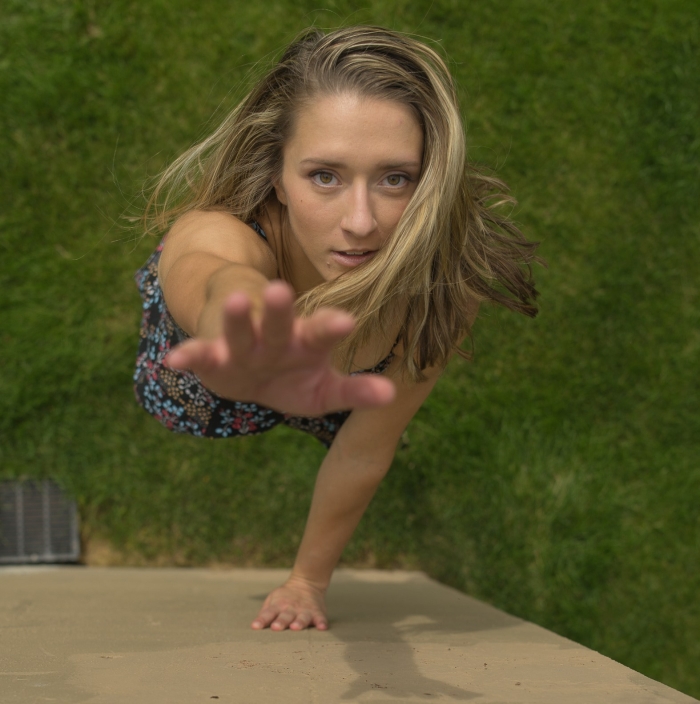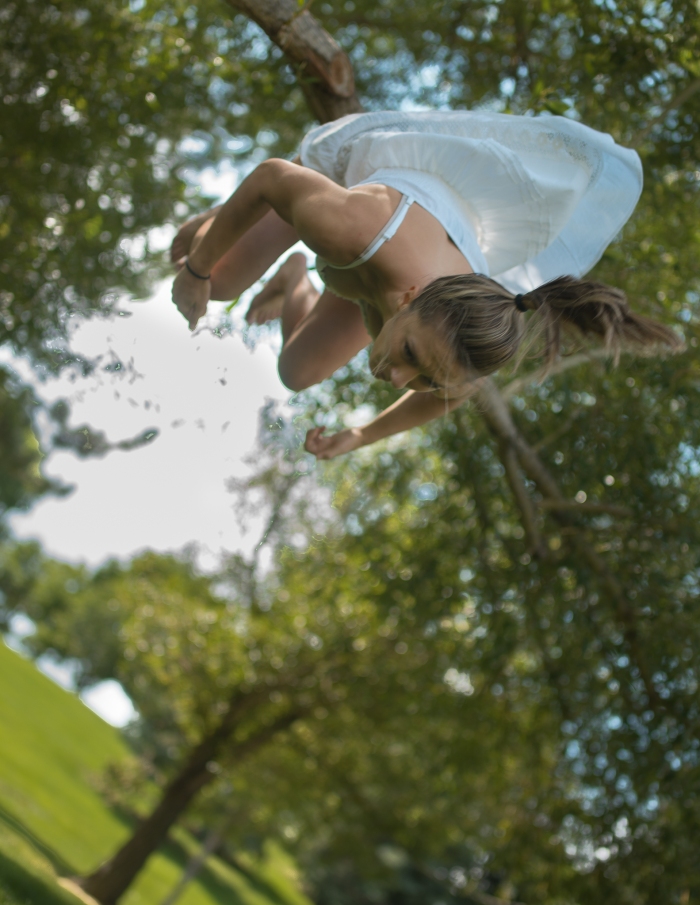I had to get some help for this one because I didn’t think it was appropriate for a male to be the sole opinion voiced on this issue. So I asked a few of parkour’s most prominent ladies about the limiting factors that are preventing an all female team from existing and dominating the clothing market. It is my sincerest hope that someone reading this will take the reins and we’ll see an all female parkour brand excel sooner than later. Let’s go!
I started off by addressing what I believe are the primary factors limiting an all female team from existing and thriving and then asked the female athletes what they thought and was happy to see similarities. I believe that it mainly comes down to location (not enough women living/training in the same area to make consistent content), public/private perception of skill level (women not feeling they have the authority to present themselves as the pinnacle of the sport), consistency (which afflicts teams of all genders – everybody has trouble sticking to their goals especially when it’s pioneering an industry) and the perception of an uphill battle that cannot be won (99% of small businesses/parkour teams fail). Let’s see what the ladies had to say about these issues.

I reached out to about 10-12 female athletes but only received responses from 7 of them (people are busy, no worries I can always write another article) and they all agreed with point 1 that there are not enough females located in the same area for a team like Storror to seem like an achievable goal. Kristine Dietrich said her guess is a lack of colocated females with the drive/skillset/desire to make it happen – which is definitely the coolest way to say it and now I know the word colocated. Stephania Zitis added also that while the sport is slowly increasing it is still increasing very slowly and as Alice Popejoy told me, it is a numbers game, when there were fewer people doing parkour these larger brands did not exist, more people = more teams. So if a community does not yet exist where there are enough females to create a brand (a rather large IF) then what other examples or models of business could be pursued to make this dream become reality?
The first example that comes to my mind is Farang. They don’t all live in the same city or even country like GUP or Storror and yet they are undoubtedly one of the most commercially successful brands in parkour. This is no doubt aided by the fact that Jason Paul (the closest person we have to a Tony Hawk) heads the brand and Anan Anwar is a very successful pop star in Thailand – not a bad start for creating a “small” business. What Farang leverages is attention and profit margin – they collaborate with some of the biggest personalities in the sport and give them a platform to excel on and they buy clothing cheap from Bangkok to sell at a premium rate internationally. In my mind there is no compelling reason why Katie McDonnell, Lorena Abreu, Lynn Jung and Sydney Olson couldn’t decide tomorrow that they all wanted to create a female facing brand that would leverage their audiences to generate an initial customer base at a small personal cost to each of them. A $500 investment from each athlete would net enough money to get plenty of sports bras, colorful leggings and dry fit dresses from an Asian factory to net a decent profit from their combined Instagram audience of over 380K followers.

Now of course there are other factors outside of their Instagram following that could affect how such a power coupling would occur. Maybe these females don’t know each other, don’t like each other, don’t balance each other well. Or as Tamila Bendabdallah pointed out to me creating an all female parkour brand just isn’t in her priorities, perhaps that is the case for most of the female parkour athletes we see on social media. Hazal Nehir pointed out as well that often times she can’t find women to train with in her city because they have moved on to some other purpose – having children, doing housework and creating a home like society expects. While in America the expectations of society are expanding for women it’s easy to forget that in many parts of the world that is still not the case unfortunately.
Juliette Marzio also pointed out that there are not enough female athletes on social media in general yet but I remember a time a decade ago where it was Luci Romberg, Pamela Forster and Sasha Sheva and that was it – and today that is certainly not the case. Georgia Munroe stated that top level athletic women have often benefited from there being less females because it creates less job competition, males need teams if they’re able to rise above the crowd whereas women are already standing out. But as Stephania pointed out to me because there are so few women in a position to make this type of brand in the first place they have perhaps already achieved a career with a male dominated team or on their own (see Katie McDonnell, Lorena Abreu and Hazal Nehir). There are more active female parkour athletes than ever before on social media and the number of nonparkour athletes that may be interested in capitalizing on the parkour market are growing by the day – like Demi Bagby and Jessie Graff to name just a few.

This leads me to my next assumption, that there is some fear barrier around waiting for permission to make such a brand happen. Juliette Marzio mentioned how daunting living in the shadow of Storror and Farang and Storm can be and how the fear of not being enough could be heavily affecting any women that have the desire to make their own brand. While this point makes a lot of sense to me, nobody told Sacha he couldn’t learn to edit, nobody told Toby he couldn’t hold the camera. And perhaps these female athletes have been told by someone that they don’t have the right or ability to make a team for themselves, or videos for themselves, or clothing for themselves, but at what point do you think authorities encouraged Storror to continue climbing on rooftops? How many alarms did they set off in Hong Kong before they passed the point of permission and allowed themselves to achieve something great? I can understand the fear of stepping into the spotlight and putting yourself up for public opinion (this blog is still very young and it’s too soon to see success as an outcome) but if we want the world to look the way we want it to then at one point we have to will it that way. To say that there are a lack of female role models in the sport just doesn’t seem like a fair argument to me anymore, because it denies the efforts of athletes like Lilou Rouel, Elise Bickley, Hazal Nahir, Juliette Marzio, Renae Dambly, Carla Kropp and countless others – it’s not that the role models for making a team aren’t there – it’s just that perhaps we aren’t used to seeing those women in roles of leadership or owning businesses in the first place.
This point cannot be overlooked, it can be terrifying to set the footsteps that others will follow in one day, but without putting that best foot forward perhaps no one would take the leap after you. This leads me to my next thought that perhaps this is not enough consistency in the existing role models to inspire the action of current and future generation of female athletes and entrepreneurs. But again I think this is incredibly unfair to the women out there setting an example right now. Julie Angel is one of the most prolific writers of our sport and avid public speaker for the radical inclusion and limitless potential our sport provides to others. Caitlin Pontrella runs one of the most exciting events (The Art of Retreat) that fosters some of the brightest minds in the sport all under one umbrella to help address the state of the union and now she runs Parkour Visions as its Executive Director. And without Gretchen Rachlis there would be no JumpFest because Justin Sheaffer has stated many times he could not make it happen without her countless hours of work and dedication to the mission of donating money to assist women suffering from breast cancer. Every day these women set the bar higher for female entrepreneurs in the sport but perhaps you are just now learning about them.

At Art of Retreat in 2017 Alice Popejoy ran a fantastic facilitation exercise that got everyone thinking on how we could improve and encourage female involvement in the sport. This exercise is a large inspiration for this article in the first place and we brought up much more than the few limiting factors that I have postulated here. The point to me that could not be stressed enough was the lack of representation of women in media and what were the factors causing said phenomena. People brought up commercial interest in sexualizing women, lack of female role models, male centric marketing and noninclusive training events, but to me it really comes back to what I mentioned in the previous paragraph – for some reason these women are waiting for permission. Nobody told Giles to pick up a camera and start making community edits, he just did it. Phil Doyle and Kie Willis had no idea how viral Professor Longhair Big Chief would become – they just went out to film a video with their friend Scott Bass. Short and simple the women who aren’t waiting for permission are out making their mark right now, and any one else who feels the same has the opportunity to do so – because the internet will decide for you, all you have to do is the work and believe in what your mission is above all else.
So if the Storror business model doesn’t work, try Farang or Etre-Fort or create something new and unique (best option) that works specifically for a female market. Both Stephania and Tamila brought up to me that perhaps said female brand would also have to make male clothing if they were to be able to compete in the current market. But I don’t know that I agree with this point, there are plenty of companies in the clothing space that started with a very specific product in a niche market and grew to become the mega brands we know today (Nike, UnderArmour, LuluLemon, etc). As aforementioned if a few women were to design some sports bras, leggings and dresses I am sure a cross section of their followers would be willing to support the first batch. You don’t need one million followers to make a company work, you just need a few hundred and good margins (1% of a million people is still 10,000 interested buyers). Maybe the fear of failure is too strong to overcome, in fact most male parkour teams fail as well. You need look no further than Rilla Hops or Myrm to see a sad case story of what happens when a brand enters the marketplace and doesn’t find their niche fast enough to maintain market dominance. There are too many factors at play for you to worry about whether or not your company will succeed – the point is that you did your best to serve your community and consumers as best you could for as long as you were able to do so. So maybe one day this theoretical female brand would need to provide male clothing as well but I bet a well marketed female brand could do fine without marketing to a single male for a long time – dollar signs are not gender specific. They’re just green.

There have been attempts at all female teams in the past (Team Tryforce and Freequence come to mind most readily) but the attempts of the past do not solely dictate the successes of today. Tempest, Etre-Fort, Storm, Skochypstiks all market some form of female clothing but none have been daring enough to create an all female line. I don’t deny the fear of failure and the incredible risk that comes with starting such an endeavor, but without risk there can be no reward. And a dominant female brand would be a reward for all of us, with only the risk of a perceived loss on your roster. One day I may have a daughter and I would never want her to feel she only has to rely on an existing company to craft the career she wants for herself – if you want it badly enough you can make any dream reality – but you have to do the work. So it doesn’t matter that female consumers want more variety than men and the clothing itself is more expensive to make. It doesn’t matter that there are not as many women in the sport of parkour or that there are less female athletes with over 10K followers. These are just excuses that the owner of the first successful female parkour brand will laugh at because everyone else was too afraid to take the leap and do what no one else was willing to do.

And maybe you’re reading this right now. You the woman (women) that elect to see opportunity where others only see obstacles. The brave few that are willing to walk the path less traveled and come back with fruits for all to enjoy. If we want the sport to be more representative of women then more women have to stand up for what they believe in. More men should be there standing beside them but it won’t happen unless the women make the decision for themselves that they want it badly enough to go and film it and sew it and sell it themselves. I hope this tough love approach doesn’t dissuade you from starting a team just because others have failed. I hope instead that you will be inspired by the sacrifice of those before you and that it will propel you to try something new, to take another approach that is more efficient and true to your own purposes. Because that’s the only way it’s going to happen, by being the most parkour you can be. Find a way to make it happen and the world will follow you, we’ll be waiting for you.
Thanks so much for reading! I would love to hear more feedback on this topic because I was only able to get so many women to respond to me in such a short period of time. This is a discussion I am most interested in encouraging because I believe despite any limiting factors there is no good reason why there can’t be a female Farang before the end of 2018 if the women wanted it badly enough. Looking forward to seeing what the conversation sparks and how you all feel about the creation of a dominant female brand.

Great article, I appreciate all the insight you gathered from some of the leading women in the community. Hawaii Parkour is a very small and isolated community but we’re very passionate about bringing more women into the sport and providing a platform for them to share their skills on social media. We’re excited to see what the next 5 years holds for women in parkour.
LikeLiked by 1 person
Thanks so much for reading! Very glad to hear the article resonated with you and hopefully provides value to your community. Would love to hear more about your community’s thoughts on the issues in this or any other articles. What is most pressing for your community to work on these days?
LikeLiked by 1 person
It’s so amazing I stumbled across this cuz this is along the lines of what I’m doing! I’m a female of color and I tried starting a business around 2 years ago with my leggings with big zipper pockets. I needed functional pants with big zipper pockets that is extremely lacking in women’s clothing so I designed some. It didn’t go well though as I couldn’t find a strong target audience and a lot of other companies started adding pockets as well. Funny enough my business led me to start training in parkour. I was desperately searching for my target audience and I went to a women’s parkour meetup hosted by PKV and bam. I got hooked on parkour. Now I’ve been training for almost a year, and I’m forcing myself to go all in on my business which is super scary. My business is called Avenqi, which has a story how I made it up. My design is so sick, especially the pockets which are my special feature.
To answer the question of why there is no exclusively female parkour brand, from my business standpoint it’s because there aren’t enough female parkour athletes compared to male; the market size is too small, and parkour is niche to begin with. That’s why my brand will be unisex, but I plan to have females lines within my brand. I haven’t officially launched yet, but well known parkour athletes have prototypes of my pants and they love it. Check out my fb page @avenqi! I’d love to hear what you think!
LikeLike